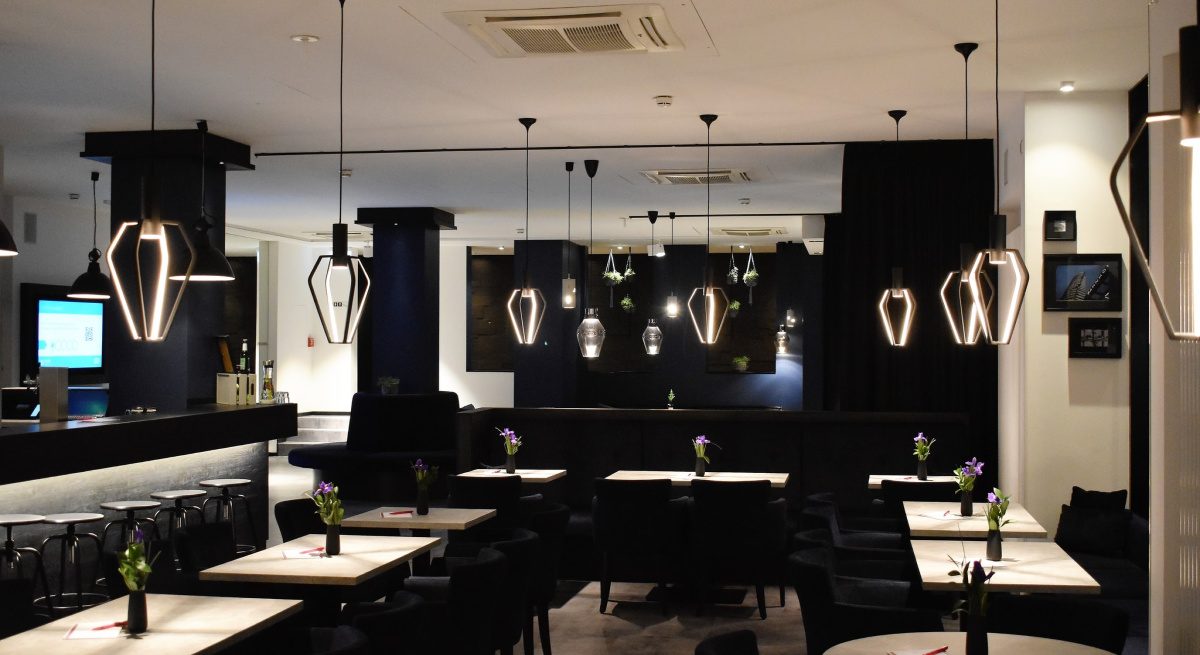Five Ways Technology is Transforming the Restaurant Industry
3 Min Read By Simki Dutta
As a restaurant owner or manager, do you find yourself getting caught up in the intricacies and not being able to focus on aspects that matter?
The key lies in achieving operational efficiency.
Whether it’s inter-team communication, improving table turnover, or reducing waste – an efficiently run restaurant results in an increase in sales and revenue.
How do you achieve that?
By adopting technology and automating processes to streamline your business operations. Not only does this contribute to a more productive environment, but it also lets you deliver delightful customer experiences.
Here’s how you can leverage technology to transform your internal business processes.
Material Handling
Considering that you deal with a lot of raw and fresh products, it becomes important to maintain their freshness while preventing revenue loss.
We have seen many tech interventions in recent times that safeguard material handling in the food business. For example, Winnow develops different digital tools that work by reducing food waste in half.
These tools help connect commercial kitchens to cloud kitchens so that the tools can analyze how much food is wasted every day.
When chefs are provided with real-time data, they are able to make necessary improvements and tweak their production processes to decrease food waste and make their kitchens profitable.
Apart from that, you can also integrate the inventory management system with the POS which will help you keep track of inventory, reduce wastage and set timely reminders on replenishing it.
Quality Control
Food contamination and the outbreak of epidemics is serious business.
Quality control is not just about maintaining the safety of the food supply chain. It is also about quality assurance which comes with transparency throughout the supply chain.
In a survey, 94 percent of surveyed shoppers confirmed that they would be more loyal to brands that are transparent with their processes. While it is easily said, it is much more difficult to implement.
Having technological interventions like the implementation of IoT sensors in the food warehouses can help detect any issues before they become big concerns.
IoT sensors can also monitor temperature fluctuations in warehouses which is very critical for perishable food items. When there are any fluctuations, the quality control team can be alerted within seconds instead of waiting for bacteria culture report to come back from labs.
Implementations of such technologies will surely save time and revenue leakage. Although the concept is still new, looking at the 21st century and the tech progress we are making every day, IoT sensors will soon be used very commonly in food storage.
Accounts Payable Automation
Accounts payable automation has been around for a long time in other industries, but only recently technologies like Optical Character Recognition (OCR), smart process automation, and API integrations have been applied to specifically meet the needs of restaurant owners.
Although the restaurant business is dynamic and each restaurant has its own set of requirements, accounts payable can be automated to a certain extent.
This means restaurants can digitize their invoices, save all the transaction history in one place, feed data directly to their accounting system, and so much more. In other words, it can be translated as more time savings, more cost savings, and more manpower saving.
With automation, restaurant owners and managers like you will have more control over the accuracy, process control, and real-time insights into the transactions that will help you make better decisions.
Staff Scheduling
Staff scheduling has got to be one of the most common challenges faced by restaurant owners and managers.
From managing leave requests and filling difficult shifts to creating accurate schedules and preventing burn out – ensuring that the right employees are available at the right periods is an excruciating process.
If you’re one of those who still create manual schedules, it’s time you consider automating the process and turn to scheduling software. That way, everyone is on the same page, expectations are managed, leaves are managed better and in the case of emergencies, shifts get filled quicker.
Not only will this save you the heavy-lifting, but it will also lead to a more efficient and happier workforce.
Employee and Supplier Onboarding
With VR becoming a reality, HR leaders are benefiting most from this tech innovation.
With a headset and software, new joiners, trainees, and suppliers can take a virtual tour of the facility without incurring any additional costs.
Trainees can undergo training without visiting restaurants. One can get to see the employees in real-time and learn even without touching the food. Doing this improves consistency, saves time and reduces costs.
With so much happening around on the technology forefront, it is safe to say that the food industry will also be tech-driven in the coming days.
More and more apps are getting developed every day that are powered by artificial intelligence. The repetitive jobs are soon likely to get replaced by robotics to enhance the performance which is much needed in the restaurant and food industry.
This gives businesses the freedom to take their hands off the monotonous tasks and focus on the more important matters such as improving customer engagement, enhancing productivity and boosting employee morale.


